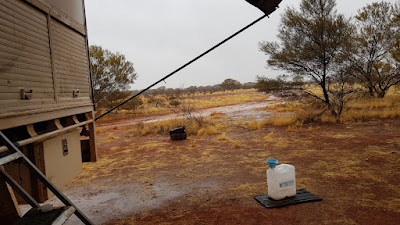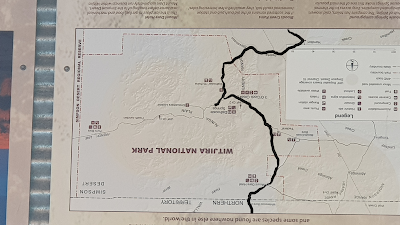Warburton road house loomed in the distance as we bumped down the Great Central Road, having just come across form Wingellina and our mining camp resort. This was to be the last fuel stop for another 800 or more ks, so all tanks were filled and we set off again.
The turn off for the Gunbarrel was 20k up the road, finding a pull off about 15k up, camp was set. With a superb desert sunset firing rich reds across the horizon, we settled down for the night.
Waking in the morning, with anticipation we set off for the turn off. The Gunbarrel is a well-known track pushed through the desert by Len Beadell when he did the roads for the atomic test sites at Maralinga in the 50s and 60s. It hasn’t been maintained since and is known for its rough condition with closed in bush along its length. There are some bores with hand pumps scattered along, but some don’t work, so you have to be prepared and self-sufficient, we were.
Turning off The Great Central Road we ambled up The Heather Highway, which would take us, firstly West, then North to meet up with the Gunbarrel proper. Camels were sighted along the road, grazing on the verge, moving off as we approached.
90Ks of bone rattling corrigations and we hit the track we were looking for. Another 10 or so, a plaque on a tree caught our eyes, one of Len Beadell's markers he put at strategic places on all his roads, marking directions and milage to key points from that position. Opposite the tree was a track into the first bore. We followed it in and set up camp for the night.
Unfortunately, the pump on the bore didn’t work, but we were full of water anyway. In the morning, dark clouds were forming and soon, spits of rain fell. As the morning progressed, so did the rain, as it was only going to be this weather for that day, we elected to stay put and wait it out.
In the morning, the clouds had gone, the surrounds looked crisp and washed. Some of the gums were flowering and put on a great display. The ground was wet, but not boggy, so all was good.
Standing outside, I could hear a low gurgling rumble a little way off and recognized the call of a camel.
Walking out of camp for a way, into a small clearing, I could still hear the camel in the distance. Then I saw, in the bush, the start of the herd galloping across the plain. Others followed, maybe I had spooked them, or the calling male was in the mood and the girls weren't.
After breakfast, we packed up and prepared for another day on the Gunbarrel.



















































